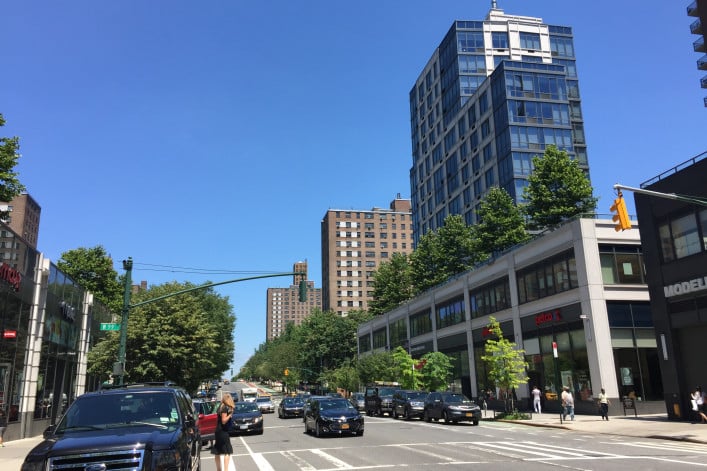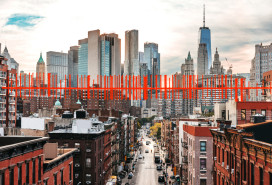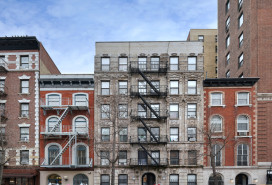Manhattan Valley: What you might not know about the Upper West Side's neighbor to the north

Ask dozens of New Yorkers where Manhattan Valley is and we bet at least half of them don't exactly know. (Downtowners and Brooklynites, we're talking to you.) It's not a large slice—east of Amsterdam to Central Park West and between 96th Street and 110th Street. It's often folded into the ever-expanding boundaries of the Upper West Side. Here's what else you probably didn't know (and should):
1. It's not all valley.
The northern end of Manhattan Valley, especially Columbus Avenue, is actually a hill of sorts — we're not talking San Francisco hill-level— that ever-so-gently dips down from around 105th Street to 96th Street. On the "valley" end of it sits a mall-ish collection of stores known as Columbus Square, which some locals love (hello, Whole Foods!) and some hate for being the reason some buildings were razed and mom-and-pops diverted or closed.
2. One of the city's most interesting condo conversions can be found here.

In the mid-2000s, the turreted, castle-like brick structure that once served as the New York Cancer Hospital and was founded by John Jacob Astor — and, according to the New York Times, sat abandoned in the 1980s, rumored to be haunted — was made over into 455 Central Park West, a luxury condo conversion that added a 26-story building on its grounds.
The tower has 83 units, and the main historic building 16, some of which have round rooms (shaped as such because it was believed that germs would reside in corners), including apartment #LM19, now on the market for $4.495 million.
3. It's also where the country's largest youth hostel is situated.

The neighborhood often teems with young tourists, many of whom stay at what's known to be the largest youth hostel in the country. Located on Amsterdam Avenue, the Victorian Gothic structure is now Hostelling International, but used to serve as the Association for the Relief of Respectable Aged Indigent Females. Built from 1881 to 1883, according to the Municipal Art Society's Places That Matter blog, it was commissioned expressly to house elderly women who were asked to pay $150 to be housed, fed and cared for the rest of their lives.
American Youth Hostelling bought it in 1984, rehabbed it, and opened its doors in 1990. It has capacity for 672 travelers, many of whom like to lounge in its outdoor patio out front.
4. It used to be somewhere else and, in the 19th century, channeled NYC's water from upstate.
Numerous newspaper articles and the blog, Bloomingdalehistory, place Manhattan Valley further uptown in the 1800s, closer to 125th Street. Nearly a century later, around the 1960s, the area where it resides now has inherited the name.
Nonetheless, in the mid-1800s, per the blog UpperWestSideHistory and The Croton Waterworks, the Croton Aqueduct, which used to be the main delivery system of NYC water from upstate to the city, ran somewhere between what's now Amsterdam and Columbus avenues from 102nd Street to 95th Street. The water pipes were moved underground in the 1870s.
BrickUnderground
5. Rentals here may be going for as much as $3,950 a month for a two-room studio (in some buildings), but that's a recent development.
Apartments here are fairly expensive now (though still cheaper than other parts of the Upper West Side south of 96th Street, west of Broadway and, of course, along Central Park West), but it once was unwanted; one developer hawking 55 apartments in buildings on 104th Street and 105th Street in 1986 put up the apartments as rentals that could later be purchased with a down payment of $1 (yes, one dollar), per the Times. As recently as 2003, one resident described the area near the housing projects on Columbus Avenue as "a parade of zombies lining up to buy their crack." In the 1990s, gunshots weren't unusual.
Now, properties in the neighborhood are asking an average of $1442 per square foot, roughly $540 per square foot less than the Upper West Side in general, per Streeteasy, though nearly $500 per square foot more than Morningside Heights to the north.
Related:
5 secrets of Harlem's Sugar Hill























